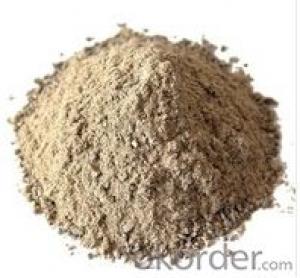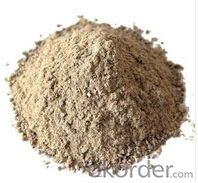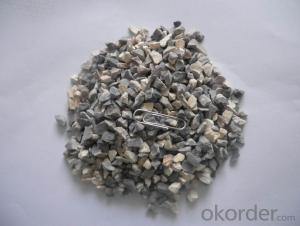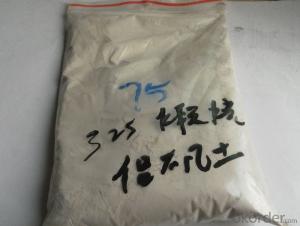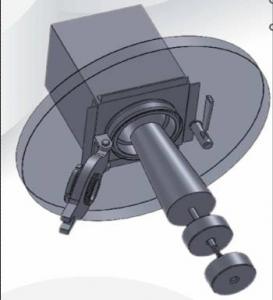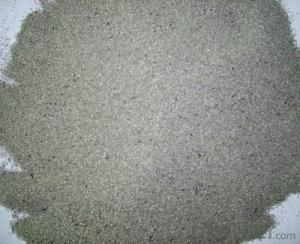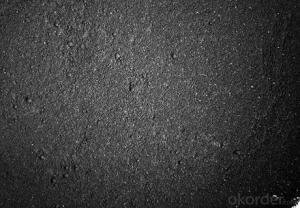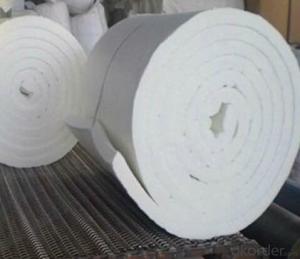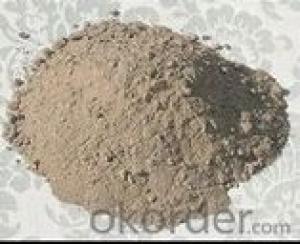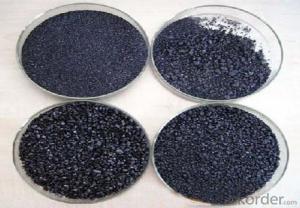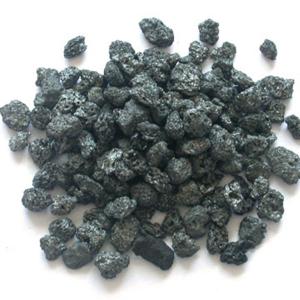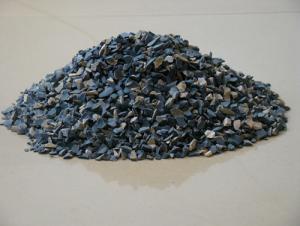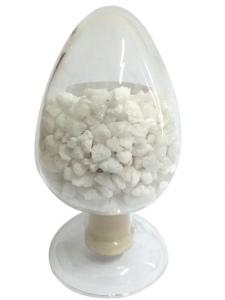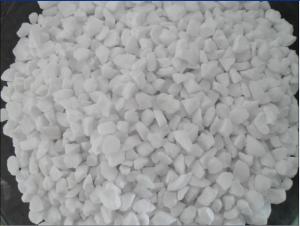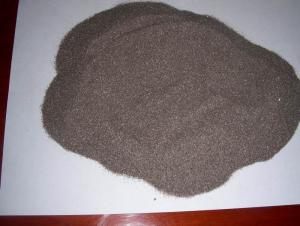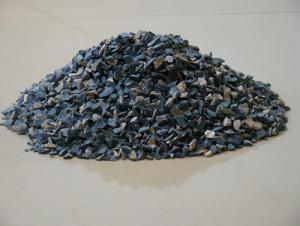Raw Materials for Refractory:Dry Impermeable Refractory Material
- Loading Port:
- China Main Port
- Payment Terms:
- TT OR LC
- Min Order Qty:
- -
- Supply Capability:
- -
OKorder Service Pledge
OKorder Financial Service
You Might Also Like
Specifications
This product widely used in nonferrous metals industry.
If Aluminum cell use Dry impermeable Refractory material,this refractory material have these advantages as follow:covenient construction,reuse,Good insulation properties,good volume stability,anti-erosion and so on.It can effectively reduce fluoride consumption and prolong the life of aluminum reduction cell.
1,covenient construction
2,reuseable
3,good insulation properties
4,good volume stability
5,anti-erosion
physical and chemical index
Project | JX-GF |
Al2O3+SiO2(%) | ≥90 |
loose bulk density(g/cm3) | ≥1.40 |
tamped bulk density(g/cm3) | ≥1.90 |
Refractoriness(%) | ≥1400 |
650℃thermal Conductivity[W/(m.k)] |
≤0.45 |
Used part |
Aluminum cell cathode carbon block and insulated liner |
1.Your inquiry related to our products or prices will be replied in 24hours.
2. Individual furmula according to customers' special refractory requests.
3.Manufacturer with large capacity,ensure the fast production cycle after confirmed the order.
4. Our professional technicians will answer all your enquires in fluent English
5. Protection of sales area and private information for all of our customers.
FACTORY:
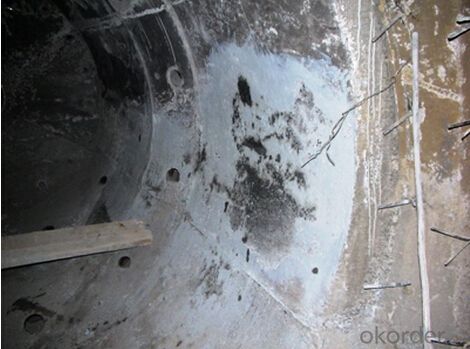
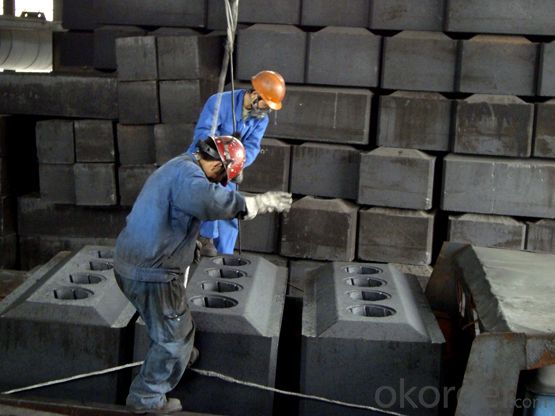
- Q: What is refractory brick?
- Capability1. Refractory brick is also known as firebrick. It is faint?yellow or brownish. Refractory brick with 770 ℃ at high temperatures is called for short firebrick. It is mainly used for building and smelting furnace. It is a refractory material made by fring refractory clay or other refractory material.
- Q: What is the upper temperature limit for refractory materials?
- Different materials are different. In the professional field, there is a triangulation cone softening point experiment as a reference for using the upper temperature limit.
- Q: What antioxidant will be used in refractories?
- Antioxidants (Antioxidants) is the material to prevent bad influence of oxygen. It is a kind of material that can help to capture and neutralize free radicals, the category of material to remove free radicals damage to human body. Some of the body's antioxidant is self-synthesis, others is also from the food supply. Strong antioxidant such as ASTA (short for astaxanthin), etc., generally human cannot synthesize and it must be intaked from food. (1)antioxidants in the food can protect food from oxidative damage and deterioration. (2) it has the antioxidant effect in the human body's digestive tract and prevent oxidative damage in the digestive tract. (3) after being absorped, it can play a role in other body tissues and organs. (4)It is derived from certain foods that have antioxidant effect of extract and can be used as a treatment drug. Antioxidant mechanism includs chelated metal ion, scavenging free radicals, quenching singlet oxygen and removal of oxygen and inhibit oxidase activity, etc
- Q: What kind of refractory materials can withstand 1500℃ when processing briquette stove core and meanwhile cost less?
- The main material is quartz sand and it is the cheapest, and can resist 1500℃ without any difficulty.
- Q: What do refractory materials include?
- It is so difficult.
- Q: What are the components of refractory clay?
- It is different from non-cement castable refractories, which does not rely on the addition of cement for combination, instead it uses chemical binder. It is refractory castable (also known as chemical bonding castable). Non-cement refractory castable takes oxide or synthetic compound ultra-fine powder or oxide sol-gel which is similar to the chemical composition of material in tungsten castable. Since the use of superfine powder or sol as binder, it has low impurity content, and therefore the refractoriness and slag erosion resistance of the castable will not be reduced. Besides, the self combination in use can help to improve high-temperature structural strength. Non-cement castable refractory is made up of refractory aggregate and powder, superfine powder of oxide or sol, trace amount of dispergator (or anti-coagulant) and proper slow acting hardener. Non-cement castable is mainly coagulated and combinated by ultrafine powder of oxide or sol, therefore, it has certain requirements for ultrafine and sol. Ultrafine powder used refers to less than 1 / zm particles. Ultrafine powder used in non-cement castables are SiO2, Al2O3, Cr2zrOz, etc. SiO micro powder is often adopted, which is the dust recycled during the smelting of metallic silicon, ferro-silicon alloy, the generation process is as follows: This recycled SiO2 powder has an average particle diameter of 0.5 pM, and it is spherical with large surface area. It is amorphous substance with high activity, so it has good bonding strength. The sol used are mainly alumina oxide and silica sol. Silica sol is made by ion exchange of sodium silicate after Na ions are removed. It can also be made after hydrolysis of ethyl silicate. There are several ways of preparing alumina sol, the easiest method is to prepare by the reaction of metallic aluminum or alchlor with hydrochloric acid.
- Q: what is the specs of thermal insulation refractory slab ?
- it is produced in accordance with scientific formula by using asbestos, glass fiber and potclay . it has strong tension strength capable of withstanding 1400 degrees Celsius, specifications!: 1.5DD20 (mm)
- Q: What is fire retardant coating mainly used for?
- Fire retardant coating is a coating which is applied to the surface of buildings and structures and can form a protective layer of fire retardancy and thermal insulation. It can reduce the flammability of the coated materials and block the rapid spread of fire so as to improve fire endurance of the coated materials. Features of fire retardant coating: (1) Fire retardant coating itself has a flame-retardancy or non-inflammability, and it can prevent the protected substrate from direct contact with the air, and delay ignition and reduce the burning speed of the objects. (2) In addition to flame retardancy or non-inflammability, the fire retardant coating itself has a a low thermal conductivity, which can delay the transfer of flame temperature to the substrate to be protected. (3) When heating, fire retardant coating decomposes non-combustible inert gas to dilute the combustible gas decomposed by the protected, making it difficult to burn or slow down the burning rate. (4) Fire retardant coating containing nitrogen will decomposite NO, NH3 and other basic groups, which compound with the organic radicals and interrupt the chain reaction so as to reduce the temperature. (5) intumescent fire retardant coating will expand and foam when heating, and form a carbon foam insulation to block the protected objects, thus delaying the transmission of heat to the substrate.
- Q: Where is the development of refractory industry?
- The rapid development of continuous casting technology of its related @ China @4 honing refractories develop and increase in variety and quality, continuous development of refractories for the continuous casting billet continuous casting production and quality have a significant impact. Especially, the completion and operation of Baosteel have greatly promoted the technological progress of refractory materials in China, and the refractory materials for continuous casting have made great progress both in variety and in quality.
Send your message to us
Raw Materials for Refractory:Dry Impermeable Refractory Material
- Loading Port:
- China Main Port
- Payment Terms:
- TT OR LC
- Min Order Qty:
- -
- Supply Capability:
- -
OKorder Service Pledge
OKorder Financial Service
Similar products
Hot products
Hot Searches
Related keywords
